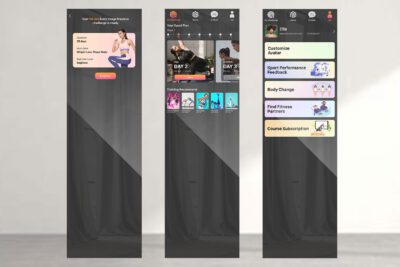Using User Experience Design to Alleviate Women’s Body Dissatisfaction Due to Social Media
The service is for females with body dissatisfaction who want to improve their body shape, lose weight and adjust body posture by exercising but lack exercise-related skills and motivation by a smart mirror service system to provide them with real-time feedback on exercise, body change tracking, gamified exercise and psychological encouragement to improve their body image and self-confidence by participating in the exercise.
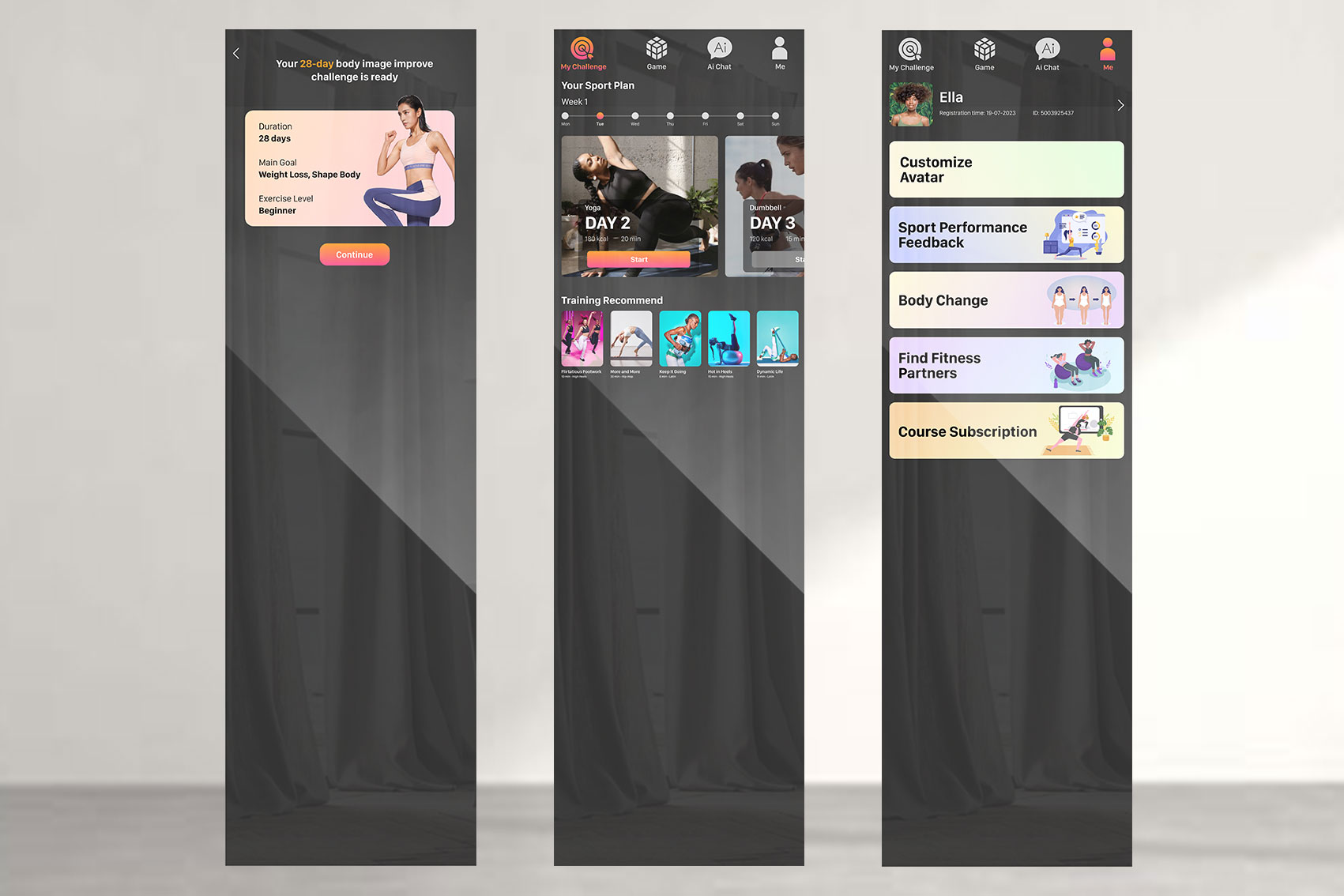
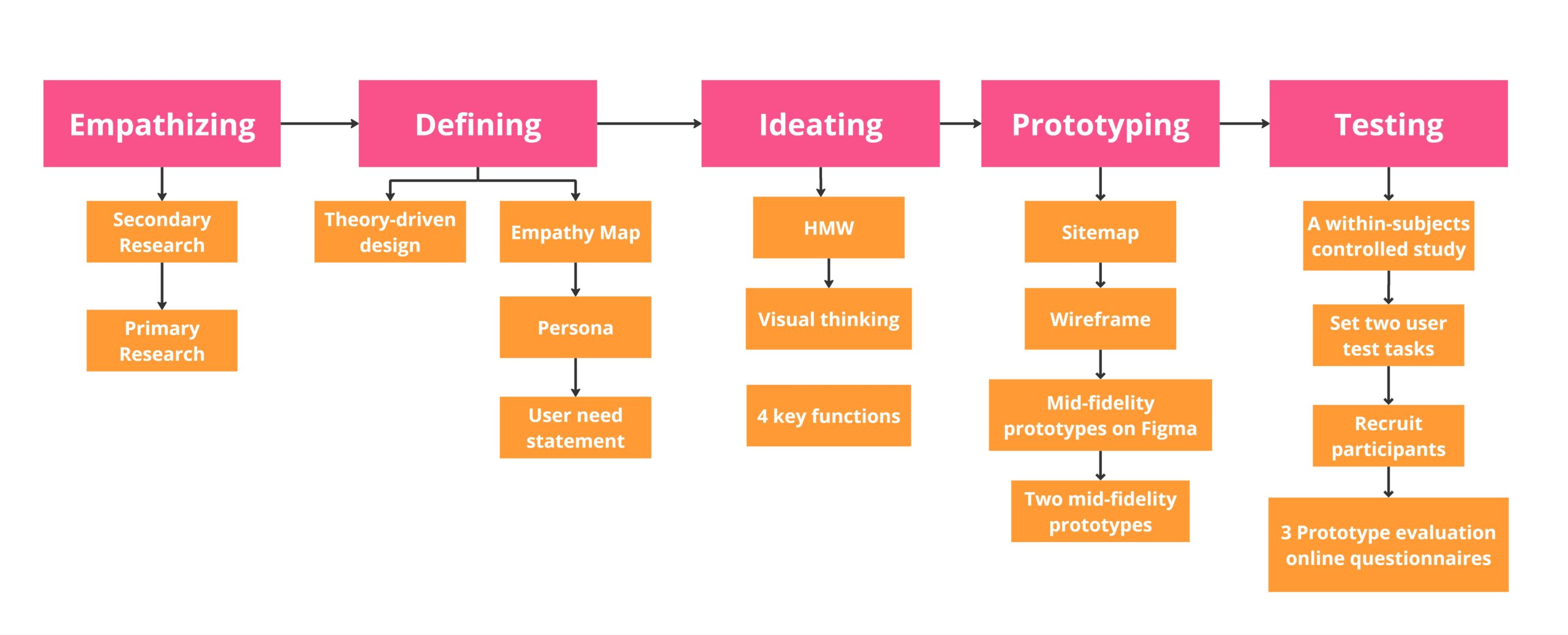
The Prototype Development Process
The prototype development process followed a design thinking approach, which included empathizing, defining, ideating, prototyping, and testing.









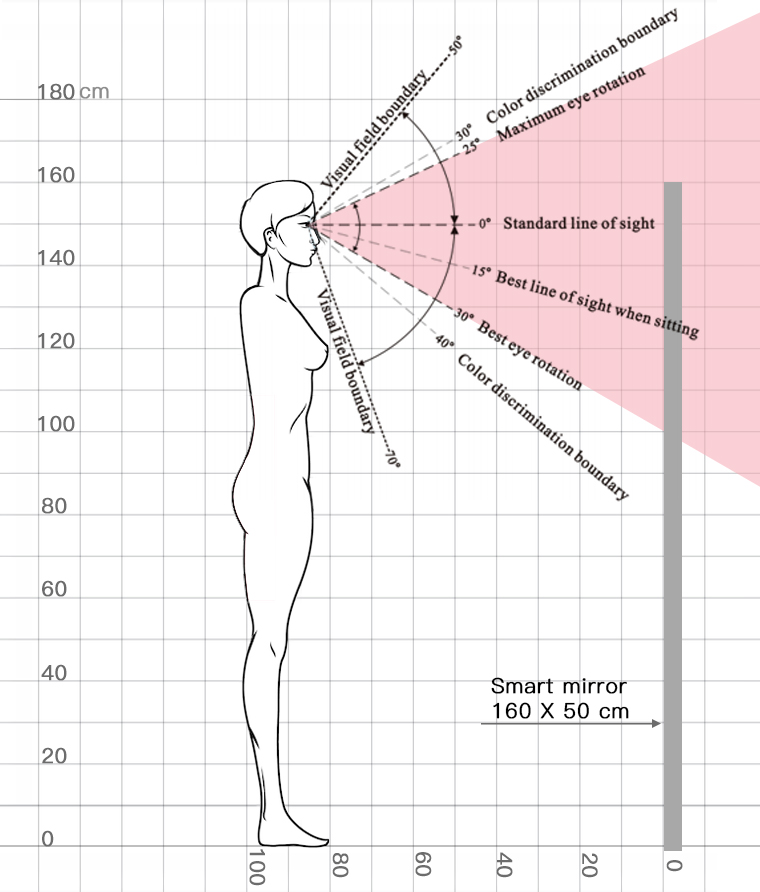
Prototype information presentation
The dimensions of this intelligent mirror design are 160 cm in height and 50 cm in width. The optimal range for eye rotation in a person’s vertical field of vision is from 25 degrees above the horizon to 30 degrees below it (Su et al., 2020). Taking an average height female of 160 cm as an example, the optimal eye rotation area when standing approximately 80 cm away from the smart mirror is above 100 cm on the screen (Figure 9). Therefore, the interface content of this design is mainly concentrated in the upper half of the screen.
Sitemap and sketches
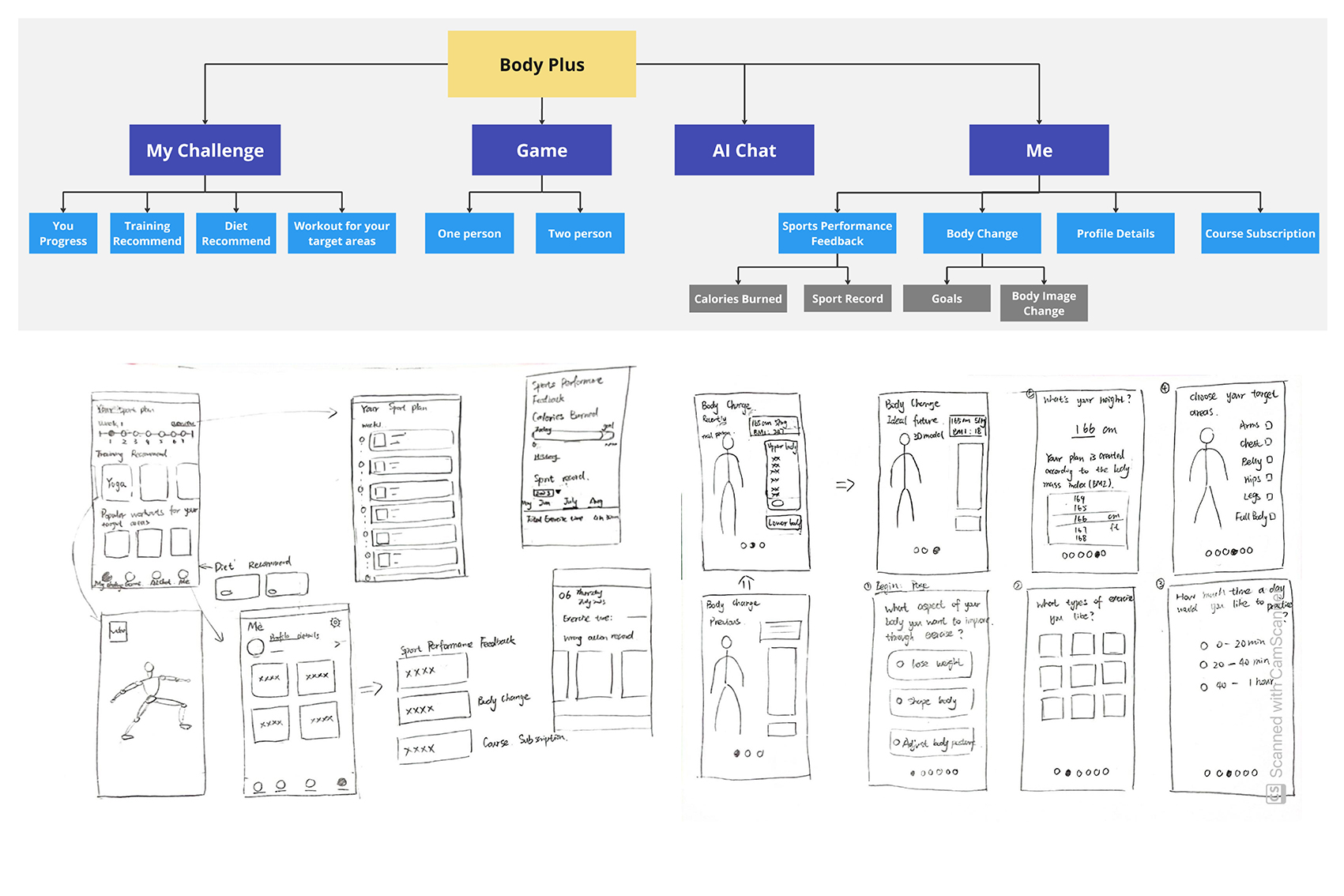
Mid-fidelity prototypes
These interfaces are designed to understand the user’s exercise preferences, exercise goals and body data. After filling in this information, the system will help users customise a sports plan.
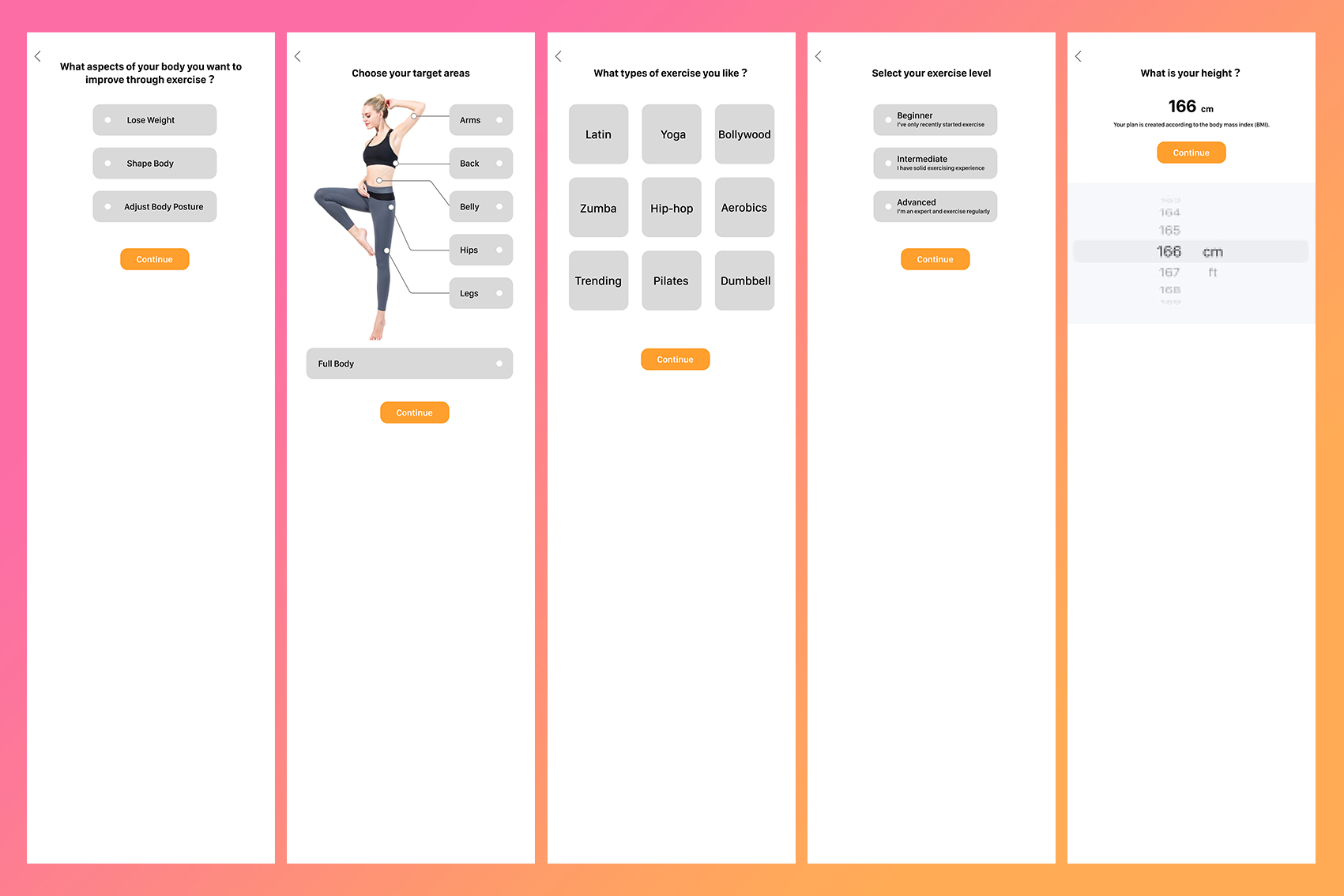
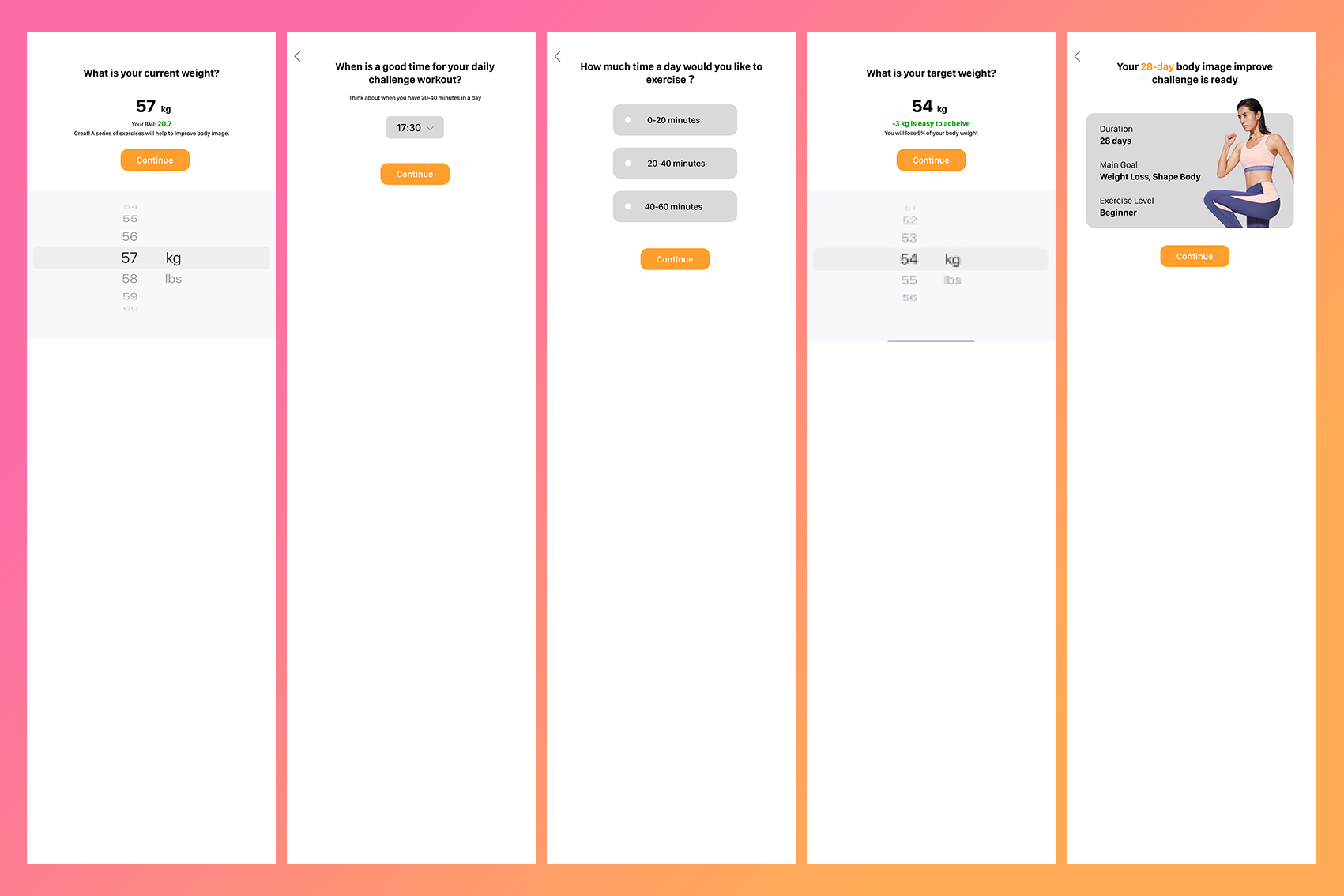
Mid-fidelity prototype A
A navigation bar with four main functions: “My Challenge”, “Game”, “AI Chat”, and “Me” was set on the top of the interface. By clicking on the “overview” next to “Your sport plan,” users can start exercising following the guidance.
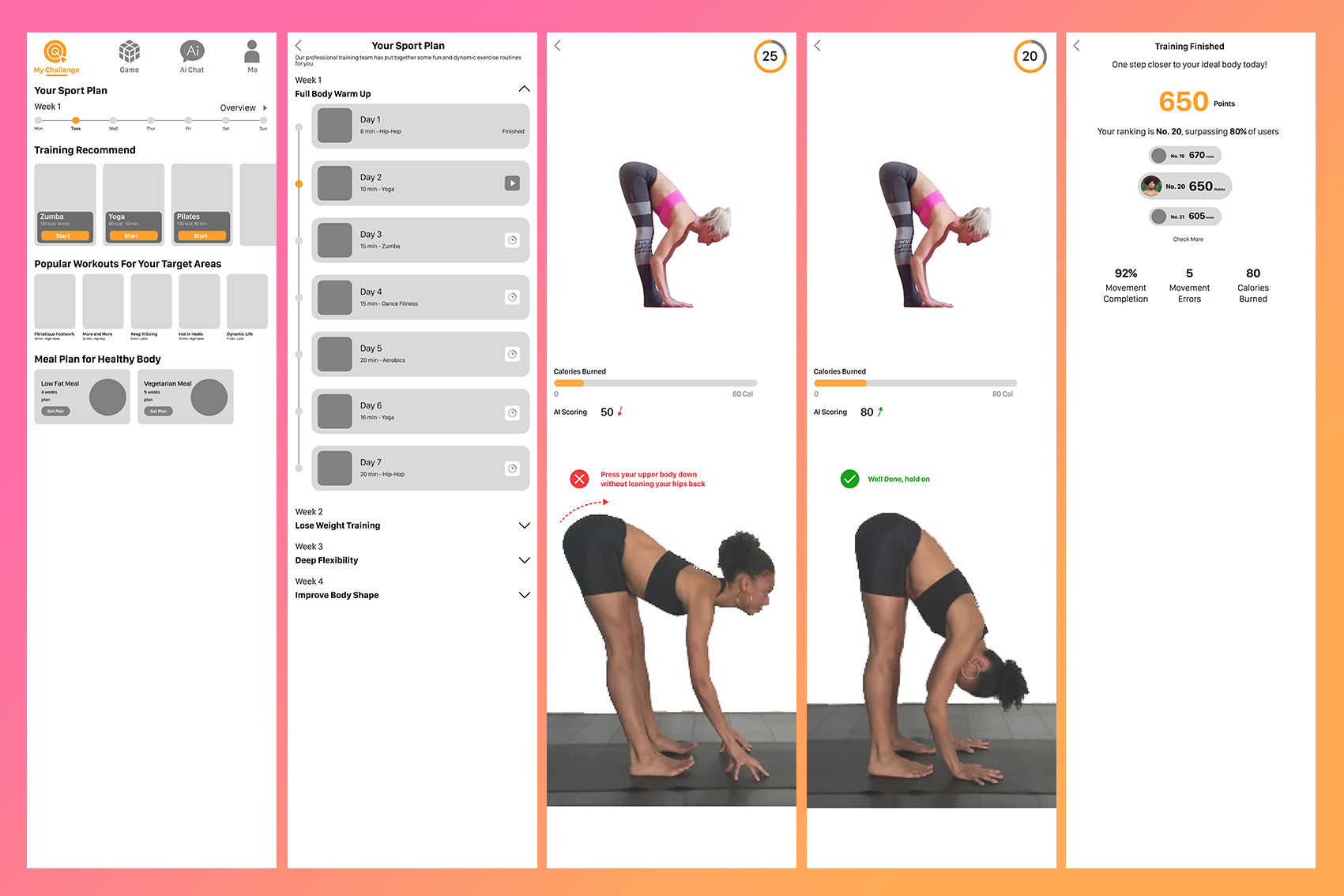
Mid-fidelity prototype B
By clicking on the sports under the recommended training, users can start exercising following the guidance.
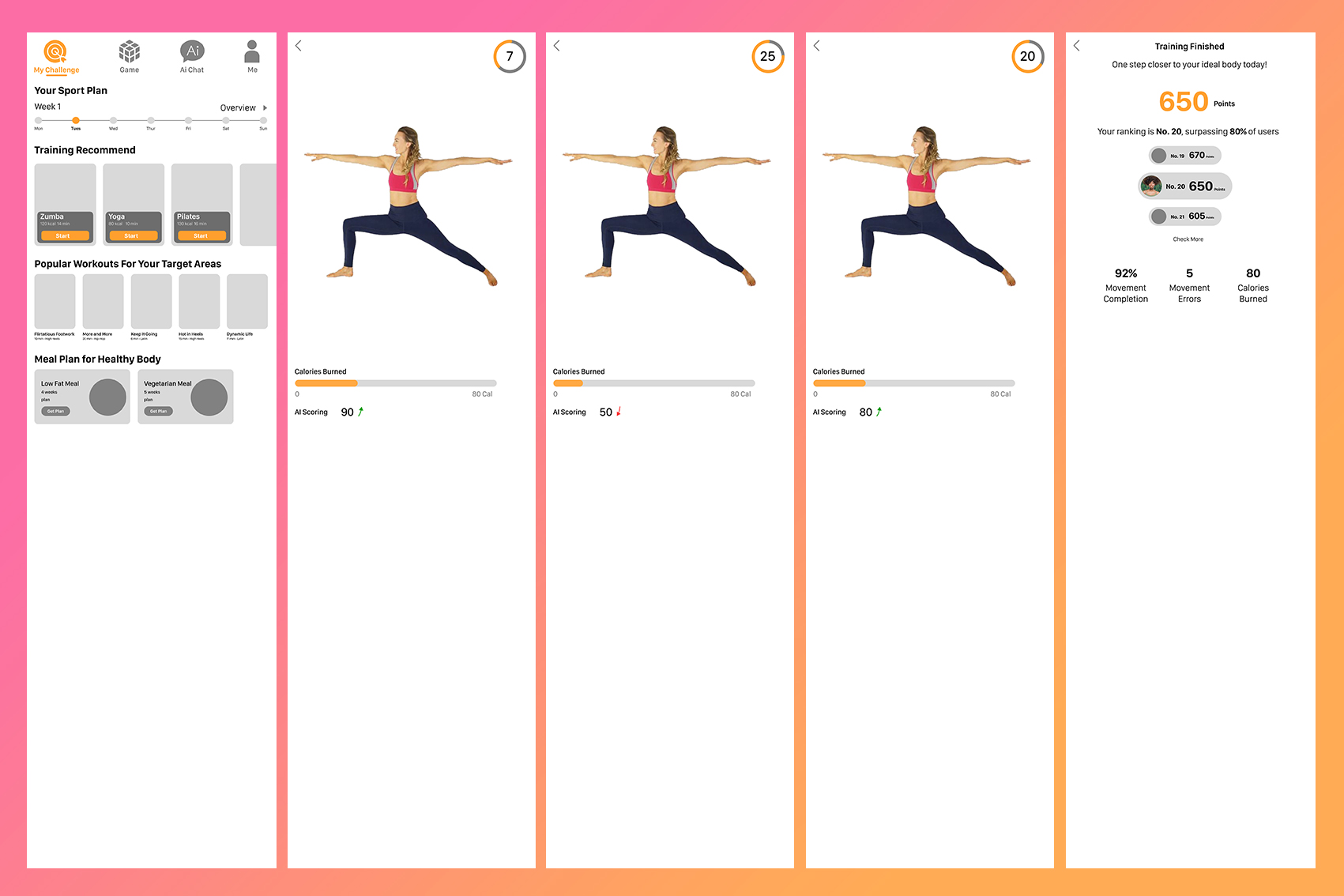
Mid-fidelity prototypes
On the “Me” page, users can view their sports performance feedback and body changes. Here are the interfaces of sports performance feedback.
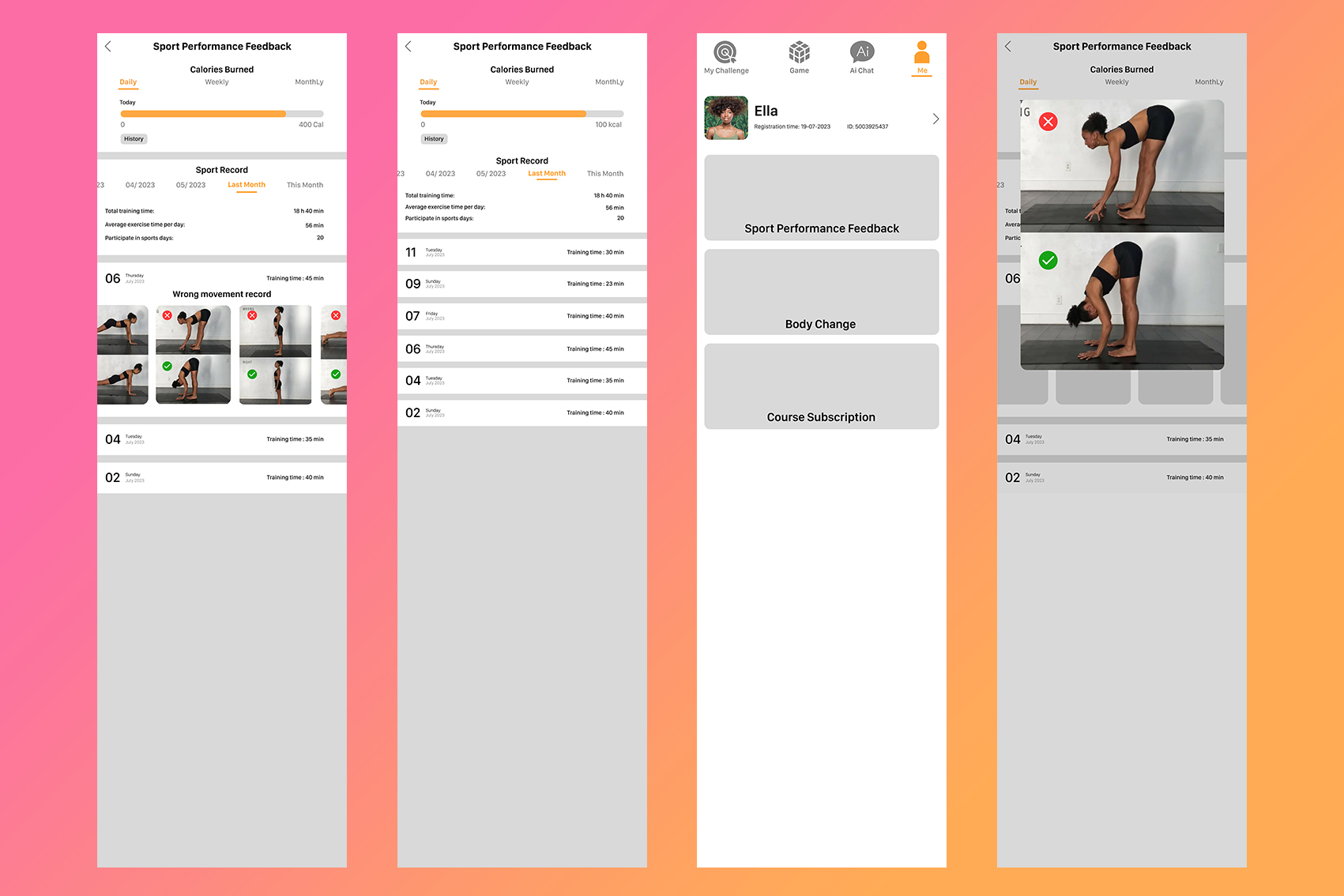
Mid-fidelity prototypes
By clicking on the “body change” button, users can use an AI camera to scan and generate a virtual body that matches their figure. This method is used to record and compare users’ different period body shapes.
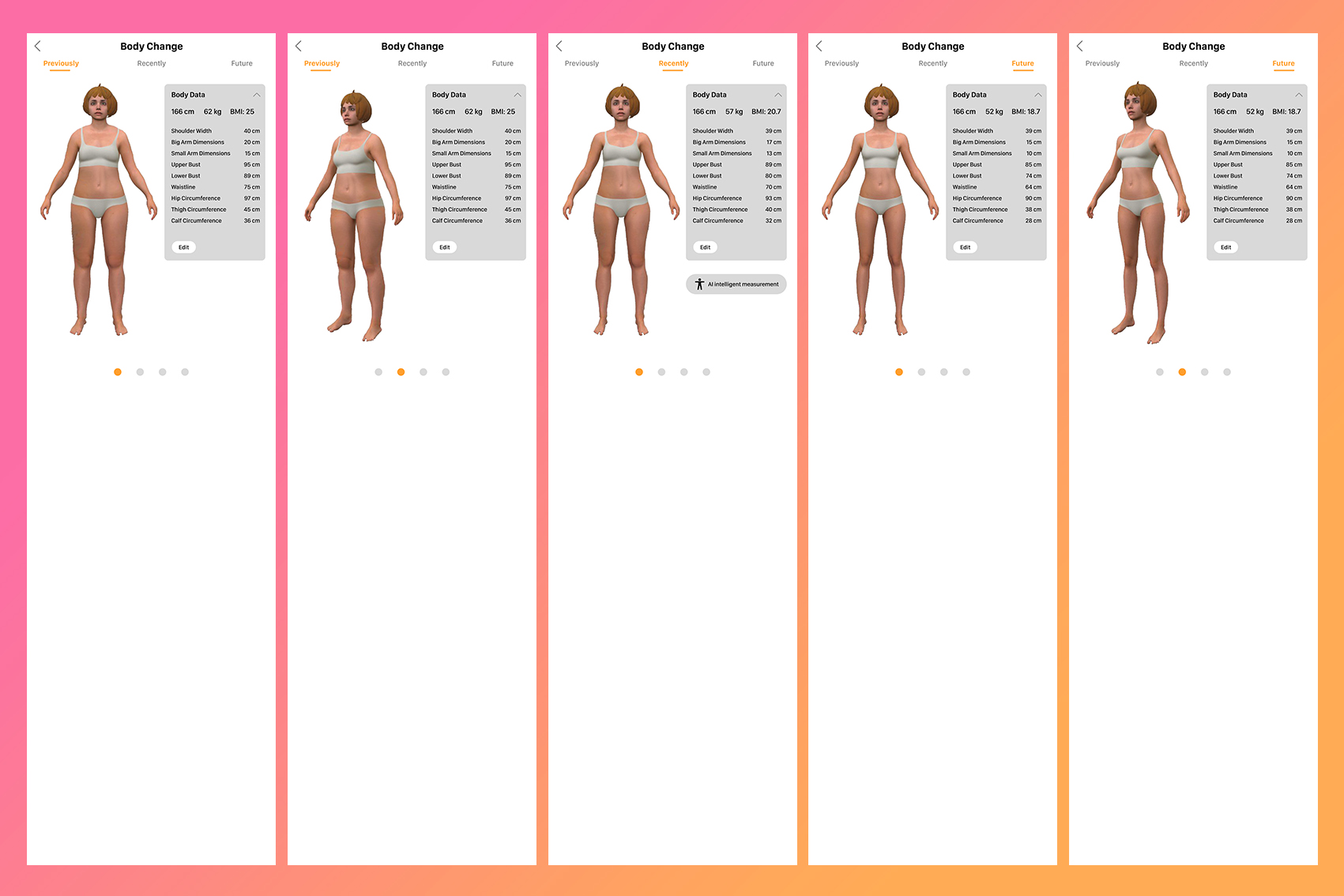
A within-subjects controlled study for the prototype test
A within-subjects controlled study was conducted and 18 participants took part in it. They were divided into two groups in different test orders.


Prototype A test task flowchart

Prototype B test task flowchart

Test results
The quantitative data results show that the majority of participants completed Task B (Prototype B) faster. The difference between prototypes A and B in terms of task load index and mental effort is slight. All task load indexes and the mental effort scale for both prototypes were low. The majority of them perceived the information to be effectively delivered. Half of the participants were inclined to believe that the design could alleviate body dissatisfaction.
From the qualitative data results, we can see integrating related information in interface design can reduce users’ attentional distraction and enhance the effectiveness of information transmission. The classification of information can improve users’ information retrieval efficiency, reduce cognitive load, and avoid wrong operations. Balancing moderate visual and auditory information can help users reduce cognitive load and understand information effectively. Having a custom avatar represent themselves on the interface while exercising not only protects the user’s privacy but also allows them to express their emotions and personality, enhancing interactivity. Accompanying exercise can enhance mutual motivation and supervision to promote exercise participation.

Prototype iteration
After iteration, the interface information was simplified and visualized. Interfaces for games and AI chat, customising avatars and finding fitness partners were added. To protect the privacy of the user, the AI camera will no longer directly record the wrong movements of the user by taking pictures but will record the movement of the avatar on the screen instead of the user’s body.




Visionary Thinkers
Visionary Creators
Visionary Makers
